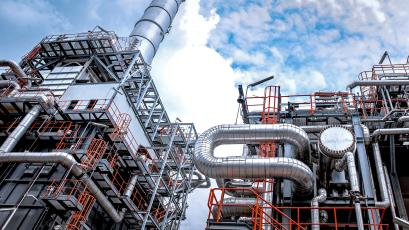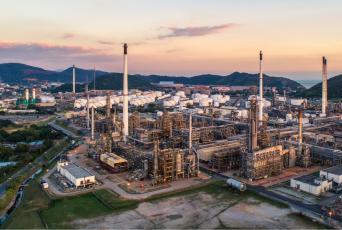With big earnings being reported in the refining sector and countless stories focusing on national gasoline and diesel prices, it’s natural to want to know how fuel manufacturing is affected by today’s economic and geopolitical circumstances and whether prices for fuel commodities—such as gasoline and diesel—have risen more than other goods and commodities. Basically, is what’s happened in the refining industry and with prices for refined products unique compared to other industries and other well-known products and commodities?
This post explores those exact questions. And in case you feel tempted to stop scrolling here, we’ll give you a quick summary: Fuel commodities have certainly become more expensive in the last couple years, but other global commodities like minerals and grains have jumped considerably more, and price increases can be seen across a range of goods and supply chains.
What’s the deal with fuel commodities?
As consumers well know, the average price of gasoline and diesel in the United States increased from mid-2019 to mid-2022 when fuel prices hit all-time highs. For regular gasoline, the price jumped from about $2.72 to $4.93 per gallon, an 81% increase over the past three years. For diesel, the price moved from about $3.09 to $5.75 per gallon, a nearly 86% increase. While prices have fallen in recent weeks, they are still high, and the questions are still relevant.
Many of the same factors affecting prices at the pump—including (1) global supply/demand imbalances coming out of the COVID-19 pandemic, (2) broader inflation and (3) effects of the ongoing Russia-Ukraine war—are having an impact on a range of goods and commodities, certainly well beyond refined products. Take a look at how other prices reflect the stress and challenges of today’s market:

Natural Gas
According to BP’s 2022 Statistical Review of World Energy, natural gas last year supplied nearly a third of U.S. energy demand and nearly a quarter of global energy demand. Natural gas is used to heat homes and businesses (both space heating and water heating), to generate electricity (38% of U.S. electricity is generated from natural gas) and as a fuel for manufacturing sites around the world, including refineries in the United States and Europe. Products made from natural gas—like ammonia used to manufacture fertilizers—are essential. That means natural gas is a near ubiquitous input cost in most supply chains. The prices consumers pay for crude-oil-derived gasoline, food, electronics and pharmaceuticals all reflect natural gas costs to a certain extent. The same can be said for things like labor costs and transportation costs.
The United States is the top producer of natural gas in the world and a major supplier of natural gas to the global market. Russia is second in terms of production but is the world’s largest natural gas exporter, supplying about 45% of Europe’s natural gas demand in 2021. Today, natural gas exports from Russia to Europe are 60% lower than in June 2021, meaning the European and global markets are contending with less natural gas to satisfy demand. And whenever demand outpaces supply, prices rise.
- In the United States, natural gas spot prices (from Louisiana’s Henry Hub) more than tripled from mid-2019 ($2.40/MMBtu) to mid-2022 ($7.70/MMBtu), a nearly 221% increase.
- In Europe, natural gas prices (recorded at the Dutch Title Transfer Facility) have risen even more, increasing by roughly nine times, or 800%, due to the region’s heavy dependence on Russian natural gas.
Metals & Minerals
Supply/demand imbalances and heightened energy costs are also affecting mineral markets and pricing. Diesel, natural gas and electricity supply the majority of energy required for mining. Prices for nickel, cobalt, palladium, rhodium, silicon, copper and lithium, which are essential for producing batteries for electric vehicles, fuel cells, computer chips and vehicle fluid catalytic converters, have all gone up in the past few years.
- Nickel went from about $12,000 per metric ton in mid-2019 to more than $28,000 in mid-2022, a nearly 133% increase.
- Cobalt went from $30,000 per metric ton in mid-2019 to over $72,400 in mid-2022, a 141% increase.
- Lithium went from $11,329.65 per metric ton in mid-2019 to $69,712.80 in mid-2022, a more than 512% increase.
- Palladium went from about $1,353 per troy ounce in mid-2019 to about $2,053 per troy ounce in mid-2022, a nearly 52% increase.
- Rhodium went from $2,950 per troy ounce in mid-2019 to $15,250 in mid-2022, a nearly 417% increase.
- Copper went from $2.78 per pound in mid-2019 to $4.55 per pound in mid-2022, a nearly 64% increase.
- Silicon, which is critical for computer chip technology, went from an average of $1.10 per pound in mid-2019 to a little over $4 per pound in mid-2022, a nearly 264% increase.
These prices are making electric vehicles (EVs) and other mineral-dependent technologies more expensive as well (more on this below).
Automobiles
Higher manufacturing costs, higher mineral input costs and material shortages (such as computer chip shortages) have increased vehicle sticker prices. According to the Cox Automotive/Moody’s Analytics Vehicle Affordability Index, vehicle prices in May hit an all-time high. Kelley Blue Book surveys show the average price of a gasoline-powered vehicle last month was above $48,000.
- At today’s prices, it would take the average income earner 42 weeks of their salary to fully pay off a new car.
There was also a huge spike in the cost of used vehicles since the pandemic:
- Data collected from Cox Automotive shows that the average listing price of a dealer-sold used vehicle went from just over $19,000 in late 2019 to over $28,000 by April 2022.
Where EVs are concerned, the Wall Street Journal reports the average price paid rose 22% over last year, to about $54,000. More recently, Kelley Blue Book data shows average EV sales prices in June were upwards of $65,000.
- Over the course of a year, the price of a Tesla Model 3 Standard Range increased to nearly $47,000.
- In June, General Motors increased the cost of both its GMC Hummer EV pickup and SUV by more than $6,000.
Food & Agriculture
Though it’s certainly not news to shoppers, a range of data trackers have noted significant increases in food and agricultural commodity costs:
- It starts with fertilizer. Data from Progressive Farmer shows that fertilizer prices made from natural-gas-derived urea have never been higher than in 2022 (take a look, the image is stunning). What’s happened in this market is a result of dramatically reduced natural gas supplies and Russia’s assault on Ukraine. Ukraine is a top global producer of fertilizer, and their production has ground to a halt. Prices for agricultural commodities that rely directly on fertilizer or directly on crops grown with fertilizer (such as grain-fed beef and pork) are affected by historically high urea costs.
- Price increases can be seen among grain commodities too. For example, Russia and Ukraine are responsible for one-third of global wheat production. With much of that production disrupted due to Russia’s invasion, costs globally have increased. In mid-2019, wheat was priced at $433 a bushel. In mid-2022 the price skyrocketed to $1,069 a bushel, a 146% increase.
- The U.N. Food and Agricultural Organization’s Food Price Index (FFPI) hit record highs this year. The index stayed mostly below 100 points throughout 2019 but began to move past that threshold in October 2020. It now averages upwards of 150 points.
- According to data from the U.S. Department of Agriculture, the retail value of all-fresh beef in mid-2019 was $6.17 per pound. By mid-2022 it reached $7.35 per pound, a 19% increase.
- The retail value of pork went from $3.88 per pound in mid-2019 to $4.93 per pound in mid-2022, a 27% increase.
Lumber
Building commodities like lumber have seen major price jumps in the past three years:
- In mid-2019, the cost of lumber was $305 per thousand board feet. Prices peaked at $1500 in April 2021. Then the cost decreased to $663 in mid-2022 but is still 117% more expensive than prices from the summer of 2019.
What does this say about prices across industries?
The data above shows just how interconnected the global economy, goods and commodities are. Just like other industries and products, refiners and the gasoline, diesel and jet fuel they produce are affected by major global events, such as COVID-19, and geopolitical disruptions, like Russia’s invasion of Ukraine. And because many goods and manufacturing processes depend on and/or are made from other commodities in tight supply, their prices reflect a range of more expensive input costs.
As for the prices of gasoline and diesel, rebalancing supply and demand will take time. The best ways to address today’s prices, in the meantime, is by encouraging policies that restore investor confidence, boost American and global energy production, improve energy infrastructure and energy transportation, and keep cost-prohibitive regulatory barriers out of the way of American fuel refiners.
The American Fuel & Petrochemical Manufacturers (AFPM) is the leading trade association representing the makers of the fuels that keep us moving, the petrochemicals that are the essential building blocks for modern life, and the midstream companies that get our feedstocks and products where they need to go. We make the products that make life better, safer and more sustainable — we make progress.


